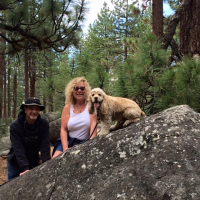In order to participate in the GunBroker Member forums, you must be logged in with your GunBroker.com account. Click the sign-in button at the top right of the forums page to get connected.
Gun retailing-Data C&P
 FrancF
Member Posts: 35,279 ✭✭✭
FrancF
Member Posts: 35,279 ✭✭✭
Over the last seven years, following a state and national trend, the number of licensed firearm dealers in Chester County has declined.
In 2007, there were 54 licensed firearm dealers in the county, 38 fewer than in 2000, according to Pennsylvania state police.
Statewide over the last seven years, the number of licensed dealers fell by more than 1,000.
At the same time, Pennsylvania ranks third in the nation for the number of firearms dealers.
Nationally, the number of commercial licensed dealers has also dropped, according to the Bureau of Alcohol, Tobacco, Firearms and Explosives (ATF). In 2002, there were more than 73,200 licensed dealers in the nation, which dropped by roughly 12,300 in 2007.
ATF special agent John Hageman said several factors likely have contributed to the decline in dealers. One is the hike in the licensing fee, which in the early 1990s jumped from $10 to $200.
Then in 2004, the ATF implemented an in-person application inspection program, which requires an ATF agent to meet with the dealer, go over laws and regulations and ensure the dealer is complying with local ordinances.
"In doing so, though that practice was not done to discourage applicants, certainly when you have these types of meetings there would be a certain number who would withdraw applications," Hageman said. "It was really just to get everyone on board with all of the rules and regulations."
In 2007, the ATF conducted more than 5,000 in-person application inspections for first-time applicants. Less than 15 percent of those applications were abandoned or denied, Hageman said.
A small fraction - less than 1 percent of all licensees no longer in business - had their licenses revoked by the ATF, Hageman said. Additionally, some license holders simply decided not to continue their businesses.
A combination of these factors, Hageman said, is likely what caused the decline in dealers locally and nationally.
While commercial licensed dealers have declined nationally, the number of licensed collectors has increased. In 2002, there were more than 30,000 licensed collectors, a number that grew to more than 48,700 in 2007.
In 2007, there were 54 licensed firearm dealers in the county, 38 fewer than in 2000, according to Pennsylvania state police.
Statewide over the last seven years, the number of licensed dealers fell by more than 1,000.
At the same time, Pennsylvania ranks third in the nation for the number of firearms dealers.
Nationally, the number of commercial licensed dealers has also dropped, according to the Bureau of Alcohol, Tobacco, Firearms and Explosives (ATF). In 2002, there were more than 73,200 licensed dealers in the nation, which dropped by roughly 12,300 in 2007.
ATF special agent John Hageman said several factors likely have contributed to the decline in dealers. One is the hike in the licensing fee, which in the early 1990s jumped from $10 to $200.
Then in 2004, the ATF implemented an in-person application inspection program, which requires an ATF agent to meet with the dealer, go over laws and regulations and ensure the dealer is complying with local ordinances.
"In doing so, though that practice was not done to discourage applicants, certainly when you have these types of meetings there would be a certain number who would withdraw applications," Hageman said. "It was really just to get everyone on board with all of the rules and regulations."
In 2007, the ATF conducted more than 5,000 in-person application inspections for first-time applicants. Less than 15 percent of those applications were abandoned or denied, Hageman said.
A small fraction - less than 1 percent of all licensees no longer in business - had their licenses revoked by the ATF, Hageman said. Additionally, some license holders simply decided not to continue their businesses.
A combination of these factors, Hageman said, is likely what caused the decline in dealers locally and nationally.
While commercial licensed dealers have declined nationally, the number of licensed collectors has increased. In 2002, there were more than 30,000 licensed collectors, a number that grew to more than 48,700 in 2007.

